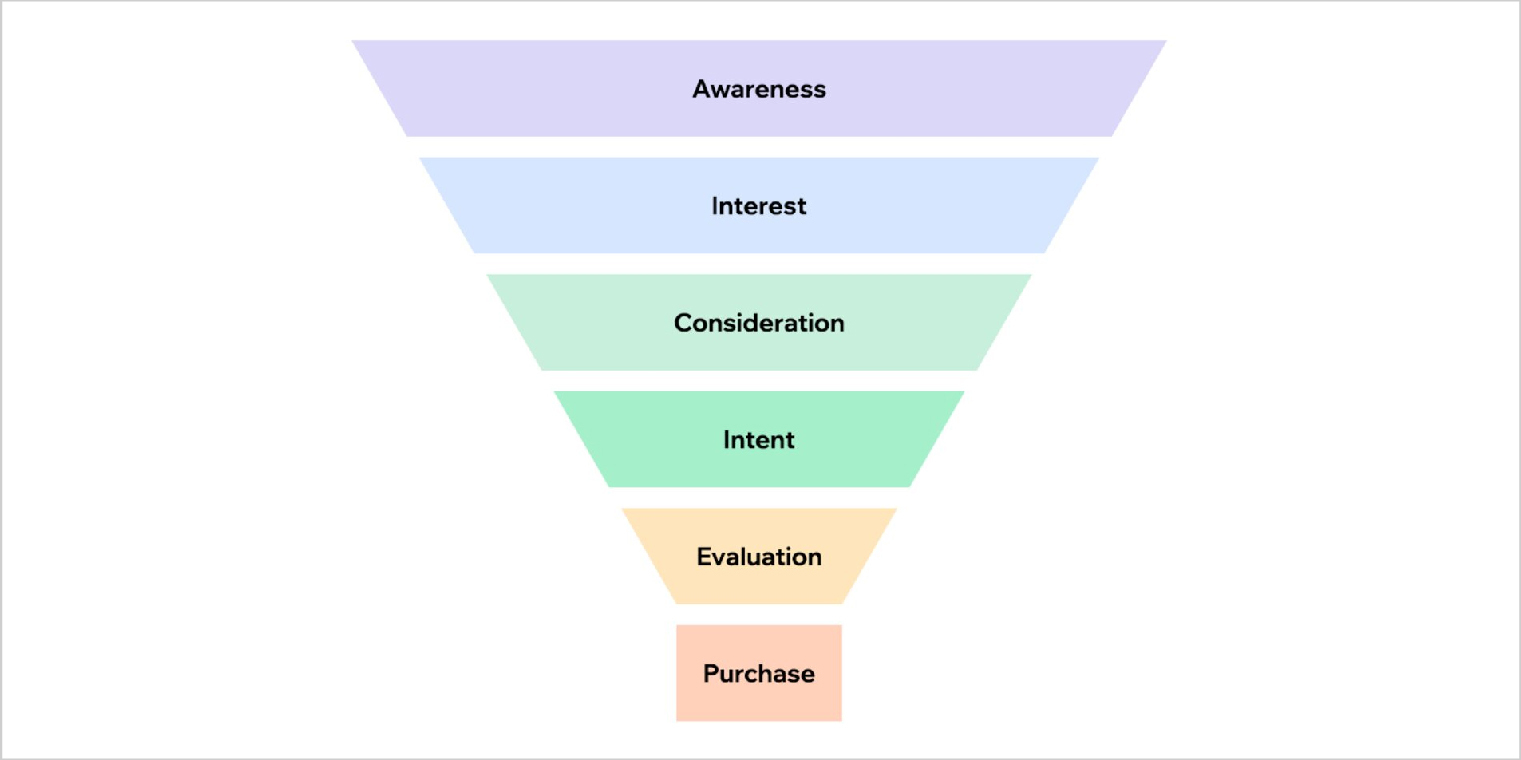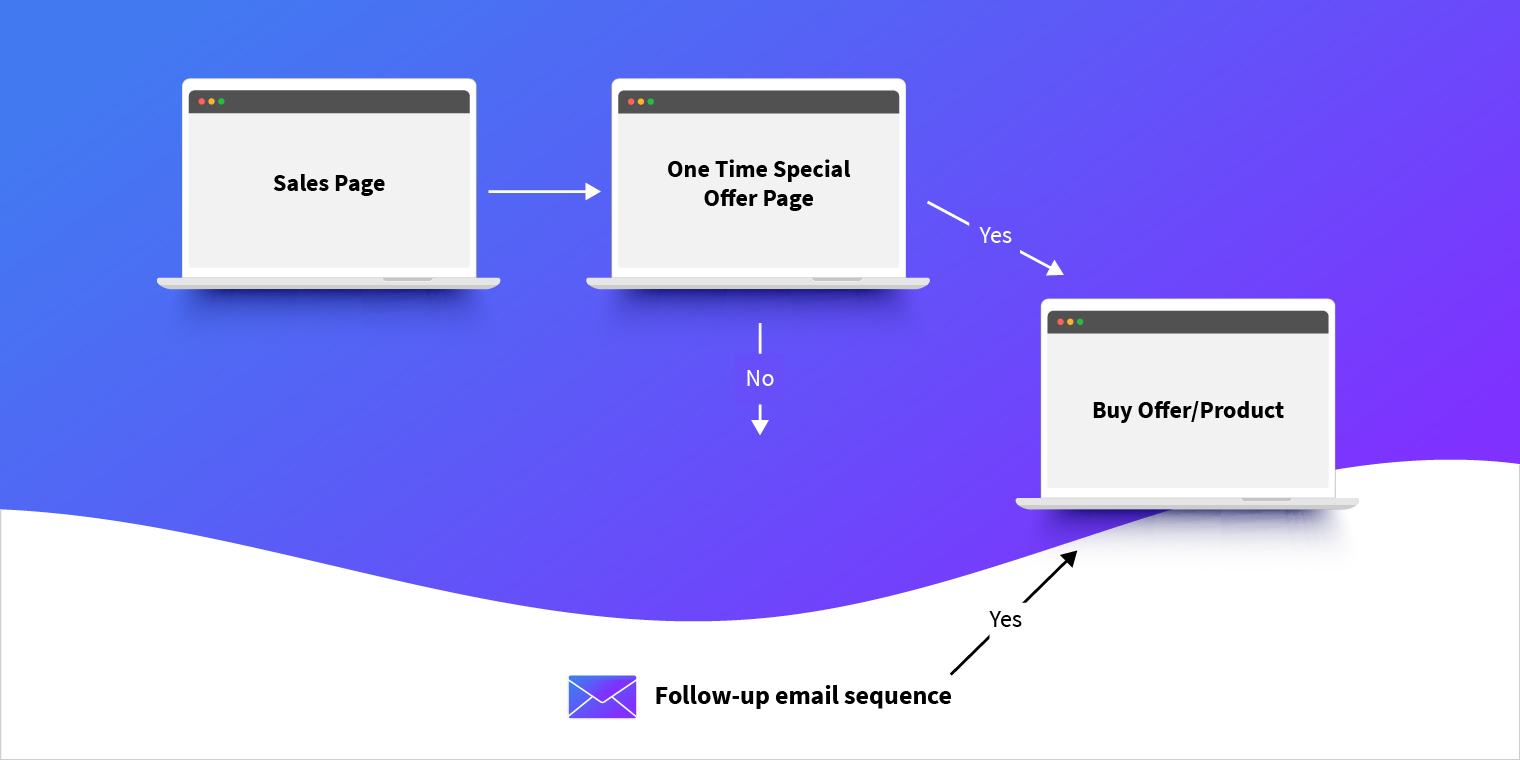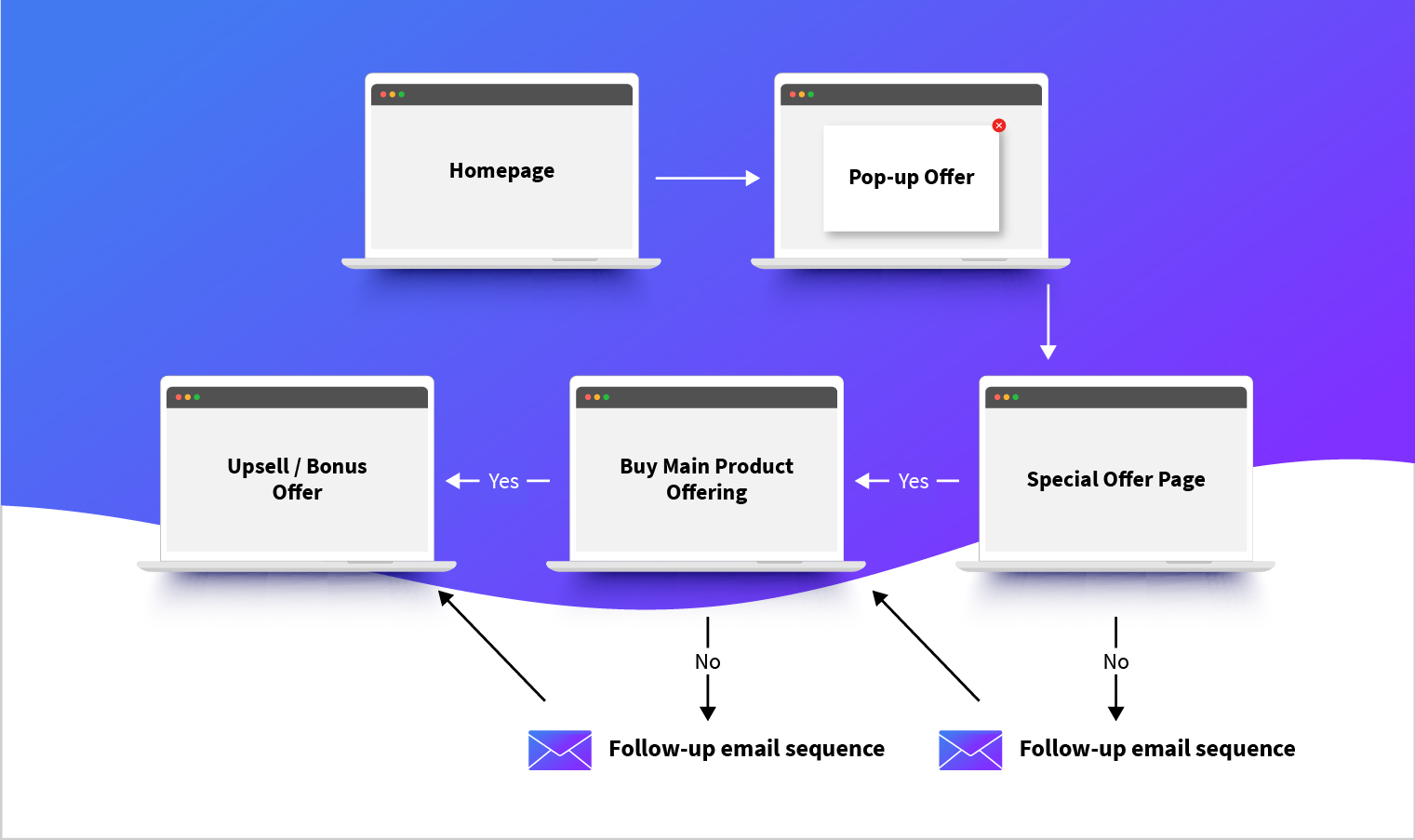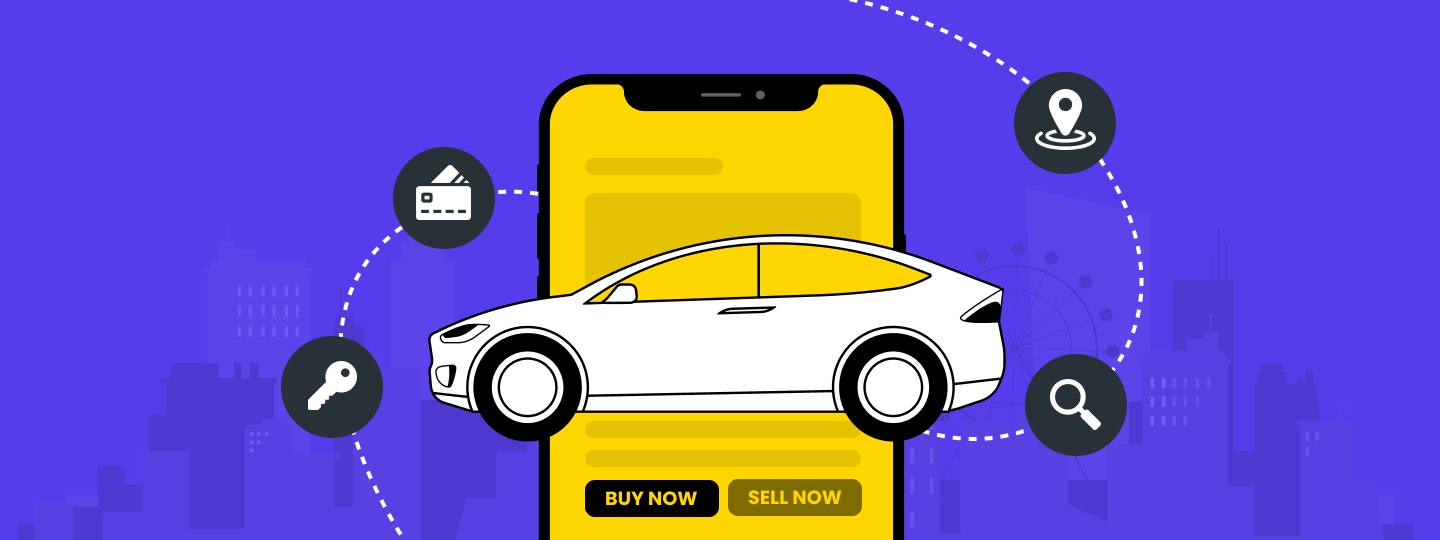Want to see better conversion rates from your marketing campaigns? Want to get more efficient with your marketing budget and drive revenue? Here are 6 marketing funnels you must track!
As B2C marketers, we know that not all visitors who add a product to their cart end up purchasing. In fact, for every 100 potential customers, 70 of them will leave without purchasing. Therefore, to drive conversions, it’s important to understand user behaviour and how the customer interacts with your brand across different touchpoints. This is where marketing funnels come in!
What are Marketing Funnels?
Marketing funnels are a representation of the various touchpoints that users go through, from the first touchpoint (i.e. finding your brand), then measuring and effectively nurturing users/prospects along the customer journey until the desired action is taken (i.e most of the time being conversions or sales).

Is there a one-size-fits-all approach to marketing funnels?
Absolutely not.
Funnels are custom for each type of business, industry, the goals of the campaign and ultimately understanding the behavior of potential customers.
If you’re fairly new to funnels or seeking inspiration to drive more qualified leads or potential customers, my recommendation is to keep funnels simple. There’s no need to overcomplicate them unless you’ve been building funnels for a long time.
For experienced marketers, funnels can involve a lot of touchpoints and conditions. They can get quite complex, but it really depends on the campaigns and their respective goals.
When it comes to building funnels, always keep your customers in mind and ensure that you provide an awesome experience, whether it involves only 2 steps (i.e. a two-step funnel) or multiple steps in the conversion cycle.
Why do you need to track your funnels effectively?
As we know, funnels are a great way to set up the foundations of ensuring users follow a certain path to your ultimate desired goal. They become even more powerful if your tracking is set up properly to track user actions.
With effective tracking, you will be able to make better data-backed decisions faster and ultimately optimize your campaigns and funnel experience with better results. Without effective tracking, you’re limiting the ability to make more data-informed decisions.
Inaccurate tracking can lead to other consequences for that particular campaign or even affect other marketing and business decisions that you and the team may make. Poor data can lead to poor business decisions. Trust me, I know this from experiences I’ve had earlier in my career.
So, what are the key things to track within a funnel?
The reality is there’s a huge list of things you can track, and of course, it depends on what’s involved in the funnel including factors such as your key event goals, content, the number of landing pages, and so forth.
However, all great funnels should be ultimately tracking;
– Contact Details
– Page Views
– Time on Site
– Video Views
– Unique / Returning Visitors
– Location
– Key demographic data
In addition to the above, advanced tracking through your paid ads platforms such as Google Ads and Facebook Ads, help refine the effectiveness of your paid ad campaigns & landing page experience. Key metrics include:
– Conversions
– Click-Through Rate (CTR)
– Landing Page Views
– Cost Per Click (CPC)
– Scroll-depth
When it comes to tracking, sometimes it can be hard to track everything. For example, some content management systems (CMS) can make installing tracking more difficult. However, the goal is to strive for as much event tracking through key funnel steps where it’s feasible and makes sense.
The key takeaway to remember is that good data leads to better decisions.
Subscribe to our newsletter to stay updated on the latest in B2C marketing
6 B2C funnels you should track and optimize to boost conversions
Now that you have a good understanding of what a marketing funnel is, let’s talk about the top 6 funnels you should be building for your consumer business to boost conversions and drive revenue.
#1 Lead Generation Funnel
One of the most effective marketing funnels I have built across numerous clients and startups is the lead generation funnel. They’re easy to build and perform well in terms of conversion rates. However, what’s the secret sauce to making lead generation funnels work?
It comes down to 2 primary things.
- The offer – It’s all about the offer. In order to ensure your funnel is effective, you need to make sure the offer is awesome. In addition, you need to be clever with the copy and headline.
- Automated email sequence – I’ve mentioned this previously, however, to really make the most of your efforts on the top of the funnel, it’s about nurturing leads through a low-cost and effective channel- email marketing.
This is how the flow of a lead magnet typically looks like:
- Landing Page visit
- A modal pop-up with an offer
- User exchanges details to receive an offer (usually just email address)
- Thank you page with a chance to view or download the offer
- Email automation sequence follow-up and nurture
If you are running paid ad campaigns, you can make use of the squeeze funnel instead of a lead magnet funnel. The Squeeze page funnel and Lead Magnet funnels are similar in nature, but typically Squeeze Page funnels focus on one core CTA/offer.
This is an example of the steps of the Squeeze page funnel:
- Visit the Squeeze page (like a short version of a sales landing page)
- User clicks CTA on squeeze page (or opted-in using email / other data points)
- The user goes to a sales page
- The user then goes to the order page & goes to check out
- Then usually a thank you/confirmation page
#2 Lead Nurturing Funnel
Once the lead is generated, it’s important to nurture them with relevant communication to drive conversions.
Here’s how a lead nurturing funnel can help:
- Top of the Funnel (TOFU) – Predominantly about awareness and consumers’ first touchpoint for a new brand/service.
- Middle of the Funnel (MOFU) – Focused on those who are aware of the company/brand and have shown some sort of interest. Typically, the goal is to show more commitment whether it be through small purchases, content assets download & more.
- Bottom of the Funnel (BOFU) – Focused on converting these users and visitors into desirable outcomes like becoming a trial user, etc.
Lead nurturing funnels can vary in complexity, from “two-step” funnels or more complex multi-step funnels.
Basic Two-step funnel example:

Basic Multi-step funnel example:

With any lead nurturing funnel, tracking is paramount to understand how users interact. So, make sure you are tracking;
- Landing Page Events – Time on page, Scroll-depth, Conversion rates & more.
- Email Events – Click-through rate (CTR), Conversion rate, Open Rates, Unsubscribes & more.
- Opt-in events/goals – Purchases, Form submissions, Quality of leads, Secondary CTA’s (i.e. pop-ups to an alternative goal).
#3 Webinar or Live Event Funnel
In B2B, Webinar and Live event funnels are often used, but what about B2C businesses?
Video is one of the best forms of consumer engagement, that’s why webinars and live event funnels can be really effective for B2C businesses as well.
Not only engaging, they quickly form brand trust and foster a relationship between the brand and consumer in a short period of time.
Whilst any marketer knows they can be used for a wide range of industries in B2B, you can use the webinar and live event funnels for (high-level examples):
- Car enthusiasts and owners – “5 ways to better clean your car with Product XYZ”. An automated webinar of a brand or influencer talking about the ways to improve the cleanliness of cars. This is when you can upsell certain products that the person is using.
- Skincare – Attract visitors to sign up to a free skincare class. During the webinar or live event, use some of your products during your session. Upsell at the end with a special bundle offer.
- Cooking shows – Can do either live or automated webinars. Then, upsell during and/or post-event of your cookbooks, courses, or more.
- Exercise/gym classes – drive users to a free class. As an example, you can upsell or cross-sell diet programs or advanced sessions at the end of the webinar.
- Online Yoga or guided meditations – get users to sign up for a week trial to a program. Over the course of a week, nurture them via emails and remarketing ads about the benefits of a paid program.
Of course, the above are only just a handful of potential ideas. There are lots of other industries where webinars and live events are applicable.
So, what does the flow look like for a standard webinar or live event funnel?
- The visitor enters onto landing page via a channel source (e.g. organic SEO or paid ads)
- Visitor signs up via a form
- Automatically redirected to a thank you page OR thank you page combined with similar recommendations
- An email automation sequence is triggered confirming the webinar & then other relevant product info
- The visitor attends the webinar or live event where you have the opportunity to sell your product/service
With webinars, you can collect names and email addresses (you can collect more info but be mindful of friction) in exchange for a value-packed webinar/live event experience. Like the above examples, webinars are perfect for getting your prospects hooked through an engaging medium, where you can then talk about further paid offers during or at the end of the webinars.
Naturally, not all viewers or prospects will buy during or straight after the webinar, so it’s important you have trackers in place to understand your conversion rates and also to nurture these users via email and ads.
#4 App-based Funnel
One of the last marketing funnels we’ve all experienced is mobile app-based funnels.
Whenever you’ve downloaded a mobile app, you’ve entered a funnel just like any application you interact with online or whenever you buy something from a store.
Whilst mobile app funnels and desktop websites have similar funnel patterns and tactics, there are a few differences in terms of customer interactions, particularly around activation & retention as well as how you measure analytics.
As an example in the awareness & acquisition phase of the funnel, most of your users will find you through the Apple or Google Play Stores.
When it comes to activation, it’s crucial that onboarding experiences have a seamless UX combined with a strong automation email sequence.
Having a strong first experience and encouraging activation will ultimately lead to retention of the user with the app. For example, users receive push notifications as reminders when certain events are triggered. Here are some good examples of mobile app retention.
What does a typical mobile-app funnel look like? Here are the key steps:
- User Discovers app via organic (e.g. App Store) or an alternative channel source
- She then downloads a mobile app from the store
- User signs up on the app – personalized onboarding touchpoints via in-app notifications, prompts, and email automation sequence
- She makes a transaction
What about analytics with app funnels?
When it comes to analytics, these are some of the key events you need to make sure you’re tracking:
- App Downloads
- App Sign-ups
- Downloads > Sign up – i.e. what’s the conversion %?
- DAU/WAU/MAU
- Session length and session intervals
- App revenue
Event tracking – Track and ensure accurate analytics across your channels as much as you can. Whatever funnel you are building, it’s important you are getting the right information to make better (and faster) data-informed decisions.
#5 Membership Funnel
If you’re building and growing a membership-focused business, then this is a marketing funnel you need to be running and continue optimizing.
The membership funnel is about focusing on users from the first touchpoint and getting them to sign up for a free trial offer. And, then nurturing them to upgrade to the paid offer.
Here’s a high-level flow of how membership funnels usually operate.
- Visitor comes to landing page or homepage via a channel source
- Two options:
- If via the homepage or other website pages, they will receive a modal pop-up to sign up for a free trial.
- If via a landing page, opt-in via the form
- Once the user is opted-in, he/she will evaluate membership pricing options and becomes a paid customer.
By now, you should know what goes into building a funnel (i.e. landing pages, email sequences, etc), but it’s a skillset in itself to work out strategies to improve conversion rates, particularly from free trial members to paying members.
Here are some tips to improve the effectiveness of membership funnels.
Your landing page should:
- Focus on sharing testimonials and customer quotes from top members
- Provide transparent pricing
- Include FAQ’s
- Contain easy and simple sign up forms
- Contain effective copy with minimal jargon
- Include videos
Of course, you need to ensure your page is optimized for mobile.
Whilst ensuring your landing pages are top-notch, it then comes down to nurturing. You can have the most beautiful landing pages and design, but it means nothing without robust nurturing.
Once a user signs up for more info or has signed up for a free trial, you need to set up these key initiatives as the bare minimum:
- Automated Email nurturing sequences
- Personalized emails
- Facebook Remarketing Ads
- Google Remarketing Ads
- Targeted pop-ups
These are effective lead nurturing tactics that will go a long way to improving your conversion rates.
#6 Purchase Funnel
Some of the widely common marketing funnels are E-commerce/Purchase funnels. We’ve experienced all of them before every time we purchase something online.
On the surface, they go like this;
- User comes to the website/app (from external sources – e.g. Ads, Email, etc)
- She visits a product page
- Then, she decides to add a product to the cart with the intent to purchase
- She completes details at checkout and purchases product
What are some key factors you should be looking for in this funnel and tracking?
As we know, the above is a high-level view of what users and visitors will do on any site.
Typically if it’s a visitor’s first time, they would explore multiple products, category pages, blog content, about page & other pages before they take the desired action.
This analytic data can be found via your analytics provider like a marketing automation tool.

So, how can you optimize your purchase funnels by using the data above?
- Funnel drop-offs – by tracking and analyzing user behavior on the pages the visitor visits, you can see where visitors may drop off. As a recommendation, you can add secondary CTA’s such as signing up to the newsletter to try and capture their email.
- Upsells/Cross-Sells – if you want to improve your Average Order Value (AOV) for customer purchases and sell more products, then you should consider adding an extra step in the cart experience. As an example, focus on showing products that are most popular or are on special discounts.
- Social Proof – Strive to improve your conversion rates from product page > cart by adding social proof triggers, such as reviews, testimonials, videos, extra product info, or other scarcity triggers (for e.g. a countdown timer). Better conversion rates ultimately lead to more revenue.
If you’re looking for some inspiration for E-commerce landing pages and funnels check out this compilation of E-commerce Case Studies.
Final Thoughts
Marketing funnels analytics lets you visualize the steps your users take to complete a task and gauge how well they are succeeding or failing at each step. The six B2C conversion funnels covered in this post will help you identify drop-off points at a granular level. And, help you create better end-user experiences and drive conversions.
Download Impact Story –Want to know how FirstCry uses Funnel Analytics?


































 Prakhya Nair
Prakhya Nair

 Inioluwa Ademuwagun
Inioluwa Ademuwagun



